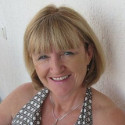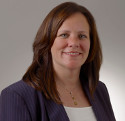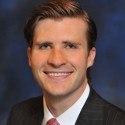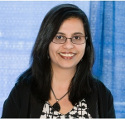
September 1, 2018
The brisk pace of drug discovery, the introduction of new technology and expanding opportunities for collaboration are rewriting the rules for sample management. Discover how innovative ideas for sample management increase the momentum of drug discovery at the inaugural 2018 SLAS Americas Sample Management Symposium: Moving Samples from Bench to Clinic.

“Drug discovery unfolds as we feed samples into experiments that generate data that we iterate back to the hypothesis,” says Sue Holland Crimmin, Ph.D., of GlaxoSmithKline (GSK, Philadelphia, PA, USA), chair of the 2018 SLAS Americas Sample Management Symposium. “If we don’t get sample management right, then we’re not going to be able to effectively and efficiently develop new medicines for our patients. Samples are the foundation of the drug discovery process.”
According to Crimmin, advancing sample management excellence is up to the diverse community engaged in the discipline. “Although we work in slightly different areas of sample management–academic, biotech, pharma and vendors–we can share key learning synergies and best practices,” she says. “It’s merely a matter of bringing the community together.”

“It’s amazing, but right now the small molecule and biologics worlds are kept completely separate from the clinical world,” says Katheryn Shea, of Brooks Life Sciences (Indianapolis, IN, USA), who is a member of the symposium’s scientific program planning committee. “So much of what we do in both worlds is the same–the infrastructure, the principles of sample management–regardless of the type of samples you manage. If we bring these sample management groups together, we can learn from each other.”
Shea also encourages life sciences professionals to “look beyond their own type of sample management expertise and reach out to the other groups for innovative technologies or approaches and adopt those ideas.”
The 2018 SLAS Americas Sample Management Symposium: Managing Samples from Bench to Clinic, Nov. 13-14, Boston, MA, USA, is designed to connect sample management’s vibrant community. Planned and presented by experienced experts, the symposium provides in-depth presentations that focus on implementing new technologies associated with small molecules, managing biologics, new modalities and clinical trials, establishing biobanks and exploring the new frontiers in compound management (CM) as they relate to drug discovery.
“We are covering the full gamut from small molecules to biologics to clinical samples–not only active clinical trials, but also future-use samples,” says Shea, who is also a session chair of the event’s clinical and biobanking topic area.
Crimmin and Shea, no strangers to collaborating on sample management educational programs, have led an SLAS Short Course on the subject at the SLAS International Conference and Exhibition for the past five years. To build the scientific program for the symposium, other committee members, including Marybeth Burton of Merck (New York), Jeff Chin of Bristol-Myers Squibb (BMS, New York), Thomas Frech of Xavo (Basel, Switzerland), Rose Gonzales, Ph.D., of Pfizer (Groton, CT, USA), and Christine Glazier of Amgen (Los Angeles), are contributing their expertise to the effort.
“The scientific program leverages learning from one area of sample management to another,” says Crimmin. “We will offer a comprehensive agenda that should appeal to many parts of different organizations.”
The symposium launches with Keynote Tyler Mulvihill, co-founder at Viant, ConsenSys (New York), who shares how exponential technologies, such as blockchain, are poised to impact sample management and drug discovery in the lively presentation, “These Times They Are a Changing.”

From objects as small as a mango to those as large as a semi-truck container; from complicated currency transactions in cyberspace to data as unique as personal identification documents, blockchain tracks the details of daily life with precision accuracy. Viant’s blockchain-based platform provides services to track, record and transfer assets across a diverse range of industries, from oil and gas companies, to pharmaceutical firms such as GSK, which will use it to improve transparency in the licensing process. In an article from BCTech Report, GSK has been using the Viant platform to leverage cryptographic security and smart contracts to track intellectual property (IP) licenses and ensure products are produced, correctly labelled, transported and stored in proper conditions throughout their entire supply chain.
“What excites me about the keynote is the opportunity to bring this new technology to everyone for discussion,” says Crimmin. “We want to raise the level of awareness of this technology and how it might be applied to sample management particularly as compliance is a key part of our processes.”
Mulvihill describes how the demands for collaboration between industry, academia and regulatory organizations, and the need for a secure encrypted audit trail that can be used to ensure traceability, can fuel a paradigm shift in how clinical studies and global health care are managed and tracked. Blockchain’s decentralized digital technology provides solutions.
Housed on a collection of global networked computers that jointly manage the database of transactions to transparently maintain a chronological and public record that can’t be altered, the technology is a virtual business ledger, according to blockgeeks.com, an online blockchain training technology educational platform. Blockchain captures everything from how the fish on your plate in a fine restaurant traveled there from the sea, to the exchange of virtual currency, such as Bitcoin, from account to account. It even prevents so called “bio pirates” from plundering the biological resources of the Amazon Rain Forest.
According to a Fortune magazine article, international institutions are quickly compiling ways blockchain can support global transactions. Mega retailer Walmart used blockchain to track the shipping history of two mangos in two seconds–something that would have taken six days, 18 hours and 26 minutes using standard methods. Container and logistics giant Maersk partnered with IBM to test blockchain to track shipments and coordinate with customers. Civil and military aeronautical company Airbus hopes to use it to trace and monitor the many intricate parts in airplane manufacturing. Accenture, Microsoft and a United Nations group are collaborating to build a blockchain to establish digital identities for the approximate one-sixth of the world’s population who lack documented proof of their existence.
“What I’ve learned so far leaves me wanting to know more,” says Shea. “Blockchain is a new frontier for our area of life sciences. It’s a whole new approach to data management and security that all of us will need in the future.”
The symposium’s scientific program addresses other hot topics including the latest in implementing new technologies in small molecules, the more traditional mainstay product of sample management. Crimmin is excited to offer these fresh, new perspectives.
“I think it’s important to bring new aspects to the table. Drug discovery and screening strategies are changing and sample management processes need to adapt to support them,” she says. “This includes using miniaturization beyond the current paradigm to capitalize and use disease cells and tissues in assays that better reflect the disease state rather than the surrogates used today.”
Addressing miniaturization is Snehal Bhatt, scientific manager within GSK's Target to Patient supply chain. In “Next Generation Compound Delivery Platforms to Support Miniaturized Biology Systems,” Bhatt discusses how drug discovery can be transformed using miniaturized formats for experiments to bring human relevance models into drug discovery earlier to deliver personalized medicine. He shows how microarrays, nano-well and microfluidics devices could deliver fundamental changes in conventional sample handling support.
Another presentation in the small molecule topic area examines “Screening Strategies for Today's Tough Targets: Maximizing Diversity in Chemical Matter.” Armed more than 30 years' experience with BMS, Pharmacopeia, Ligand Pharmaceuticals, Venenum Biodesign and Merck, Maria Webb, Ph.D., of Merck (Kenilworth, NJ, USA), describes technologies to identify novel chemical matter, a blend of functional and structural approaches to interrogate targets in orthogonal assays and a diverse collection of chemical matter.
In the symposium’s presentations on biologics and new modalities, Crimmin hopes to draw not only from information offered by thought leaders, but also from the collective knowledge of the event’s participants. “We need to discuss and resolve some of the key issues in this space,” she says, adding that presentations in this topic area include open time for audience participation.
“Biologics are a whole realm of treatment that shows so much promise in health care,” says Shea. “Having a focus on that is important.”
For example, Jennifer Moore, Ph.D., director of stem cell services and technologies at Rutgers University Cell and DNA Repository (RUCDR) Infinite Biologics (New Brunswick, NJ, USA), delves into “Building Better iPSC Models of Human Disease and Development.” Moore’s group developed a high-throughput, cost effective workflow for generating human induced pluripotent stem cells (hiPSC) and uses CRISPR/Cas9 to create isogenic cell lines that serve as better controls and help eliminate effects that are due to genetic variance rather than a biological mechanism.
“Then there are exciting pieces in automation, like cryogenics at temperatures such as -195 degrees Celsius,” says Crimmin, referring to a presentation by Robert Perkinson, M.Sc., of GSK, who highlights key benefits, shares common challenges and provides the company’s progress-to-date using robotics to deposit, store and retrieve temperature-sensitive biological assets stored at ultra-low temperatures in “Challenges and Opportunities in Automating Biological Sample Inventories.”
“That’s a real technical challenge and it shows how automation can be leveraged in the biological world,” notes Crimmin. “Traditionally we’ve exploited automation in small molecules, but there’s been less and less done with automation in the biological space, so this is a change.”
Crimmin describes the clinical and biobanking presentations to be featured in the symposium as “the link between the sample and the patient–it’s why we’re all here.” Shea agrees. “The clinical portion is the whole purpose that we’re managing those small molecules and biologics up front,” says Shea. Presentations compare different sample management models and discuss how to optimize the use of biospecimens through aligning the goals of clinical trial and translational medicine samples, thereby maximizing scientific outcomes.
“There are some nice talks on the potential re-use of human clinical samples and how they can be applied to early discovery to help identify novel targets and new medicines, such as what the Accelerated Cure Project (ACP) is doing for multiple sclerosis (MS),” comments Crimmin.
“In "Patient Engagement in Drug Development: What Patients Have to Offer and What They Want You to Know," we have the full circle of life sciences discovery, from bench to bedside and back again,” says Shea.
The presentation, led by Hollie Schmidt, vice president of scientific operations for ACP, a patient-founded national non-profit organization dedicated to accelerating advances toward a cure for MS, digs into new forms of collaboration and clinical biobanking between patients and drug development organizations. Schmidt covers ACP’s iConquerMS, an online portal that allows patients to help researchers by providing information through surveys and health records, and the ACP Repository, a large-scale collection of biological samples and data from people with MS, selected demyelinating diseases and unaffected controls. The repository also aggregates the results from all MS studies for collective analysis.
In addition, biobanking is explored by Victoria Haggerson, Ph.D., of the University of Pittsburgh Clinical and Translational Science Institute (Pittsburgh, PA, USA). In “Biobanking: Old and New,” she covers the highlights and lowlights of biobanking versus small molecule banking, as well as legacy versus brand new biospecimen banking, with an emphasis on IT, technology and sample annotation.
In the final category of the scientific program, Crimmin reports that key players in the industry present obstacles and opportunities in the future of discovery. “We’re going to have an interesting point/counterpoint presentation–something a bit different from the norm,” she says.
Led by Bhagyashree Khunte, M.Sc., MBA, of Pfizer (Groton, CT, USA) and Jeff Chin of BMS, “New Tech Bypassing Traditional CM” focuses on traditional CM strategies versus a new paradigm in which technology enables the distribution of newly synthesized compounds directly to the assay.

“We’ll present two sides of the equation; one around how chemists are making compounds now and the value of submitting them for perpetuity into the corporate collection, versus the drive for speed and miniaturization where there won’t be material that can go into that collection for future drug discoveries,” says Crimmin, describing the situation as a tradeoff.
Khunte describes the situation as project dependent. “On one hand there is tradition and on the other there is new technology that we are developing to accelerate the discovery process,” she says. “No one solution will fit all projects and that’s why the point/counterpoint format is valuable for this topic. We have the opportunity to explore both sides of the issue.”
As Senior Principal Scientist Khunte leads the Pfizer Discovery Separations group that provides milligram to multigram-scale purification support to medicinal chemistry therapeutic areas. She delivers the counterpoint with a focus on Pfizer’s adoption of new technology for parallel medicinal chemistry (PMC) to bypass traditional CM.
“There is value in the traditional CM method, but it’s important to understand new technology in the process. We can set up workflows to provide flexibility–one workflow can follow the traditional process, the other can activate for certain projects to bypass CM. That’s where the point/counterpoint format comes in: determining where each paradigm is beneficial to delivering compounds efficiently,” Khunte explains.
“There are so many technological advances and laboratory automation available for sample management, it is easy to get overwhelmed,” she continues. “Expense and uncertainty lead scientists to stick with tried and true approaches to the process. I want to discuss the flexibility that we need moving forward. The idea is to get the compounds faster–to speed up the process and do more with less material.”
“Sample management is critical for any company,” Khunte says. “Having a meeting that gives everyone the opportunity to learn more about what is being done in different organizations is wonderful. I am looking forward to it.”
SLAS offers best-in-class multi-dimensional education to advance learning throughout its community in the form of year-round in-person programs and continues the learning experience through in-print Special Collections in its two scientific journals to inform and connect its diverse, global community of life sciences professionals and students. The 2018 SLAS Americas Sample Management Symposium is in-person component of the Society’s focused educational initiative that was established as part of the SLAS Strategic Plan 2017-2021. As part of the in-print component, select presentations from the symposium will be published in special collections available in the April 2019 issues of SLAS Discovery (Advancing Life Sciences R&D) and SLAS Technology (Translating Life Sciences Innovation).
GSK, Viant Give Blockchain-Based Tracking a Shot
Learn More about Accelerated Cure Project's Online Portal for MS Patients to Help Drive Research